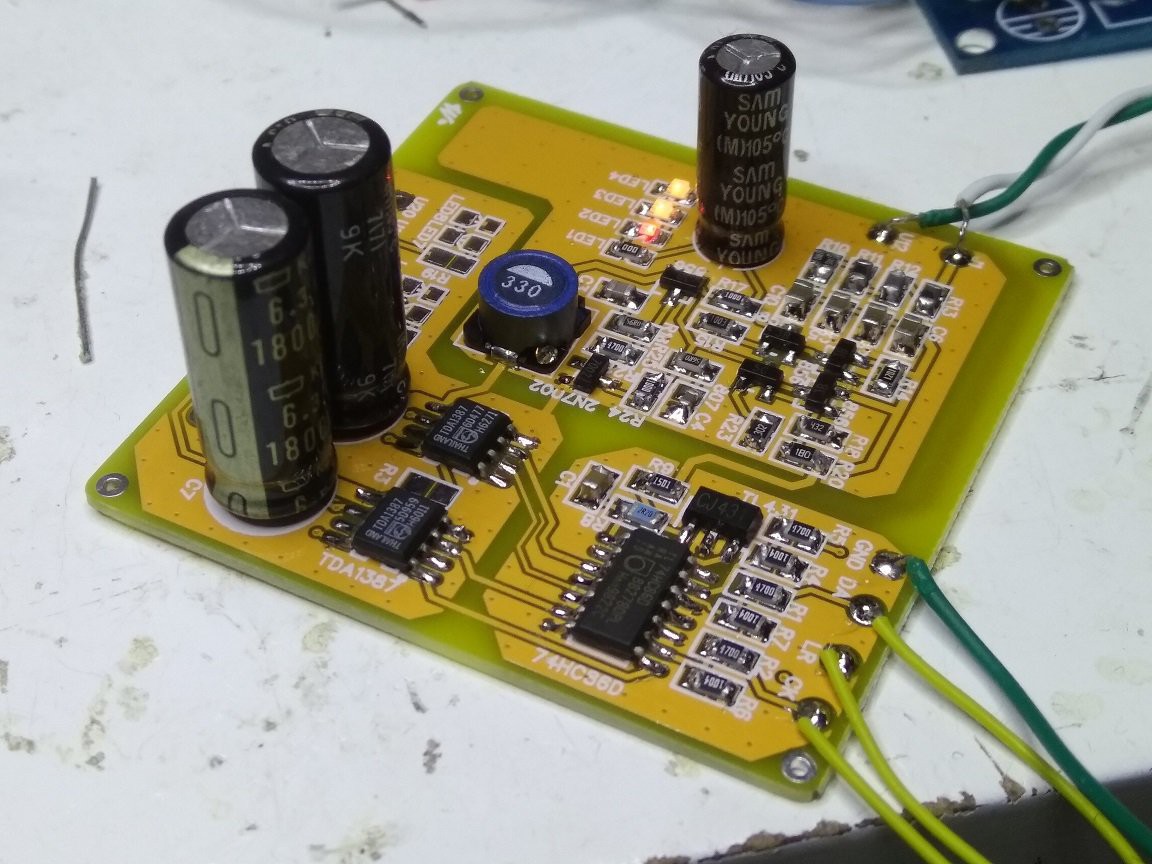The original 4* DAC board came with a few errors, the biggie was that I'd overlooked how noisy the TL431 is and used it as reference for a series regulator without any low-pass filtering. The result was that with the original PSU configuration there was an excess of hiss. I bodged the boards to include an additional RC stage between the TL431 and the pass transistor which made the boards usable.
On giving more attention to the PSU I played around on the bench with a Sziklai pair of transistors rather than a single emitter follower. Turns out this combo is rather prone to oscillations (above 10MHz) but I managed to get it tame by using a bipolar/MOSFET combination. The advantage is the pair of trannies wrapped around one another gives a much lower output impedance, something very desirable in a power supply reg for audio use. The CFP/Sziklai pair has been put to good use in the new updated PSU on v2 and I was quite surprised how much of an improvement to the bass it has brought. In fact I arrogantly consider my DAC to have the best bass of any DAC I've ever heard (bear in mind I've not heard that many, but did have a listen to a few at a recent high-end show in Shanghai). The improved bass gives the subjective impression of more 'weight' or 'authority' to piano for example, but also contributes to a much more believable rendering of the recorded acoustic.
The last change is the reduction from 4 DACs to 2, a corollary of the improvement to the PSU. Using fewer DACs means changes are needed to the filter-I/V board, but these are entirely component value changes (inductor values go up, caps go down). The 2 DACs are permanently wired in anti-phase to maintain PSU stability. The TDA1387 takes a varying current from the supply depending on its digital code, however two DACs together fed in anti-phase take an almost constant current. This is quite easily visible by looking at the modulation of the supply when playing music, via a fairly sensitive preamp as found in my millivoltmeter.

We've adopted a 3 island ground fill, the areas are the input buffer, the DACs themselves and the PSU (which is top right). The 2 yellow and one red LED take over the function that was previously given to the second TL431.
 Richard Dudley
Richard Dudley
Discussions
Become a Hackaday.io Member
Create an account to leave a comment. Already have an account? Log In.
just wondering, what i2s source that you use? Usb to i2s ? Or something like player with i2s output ? Is source matters ? Like use cheap Chinese usb i2s pcm2706 since dac only accepted 16 bit
Are you sure? yes | no